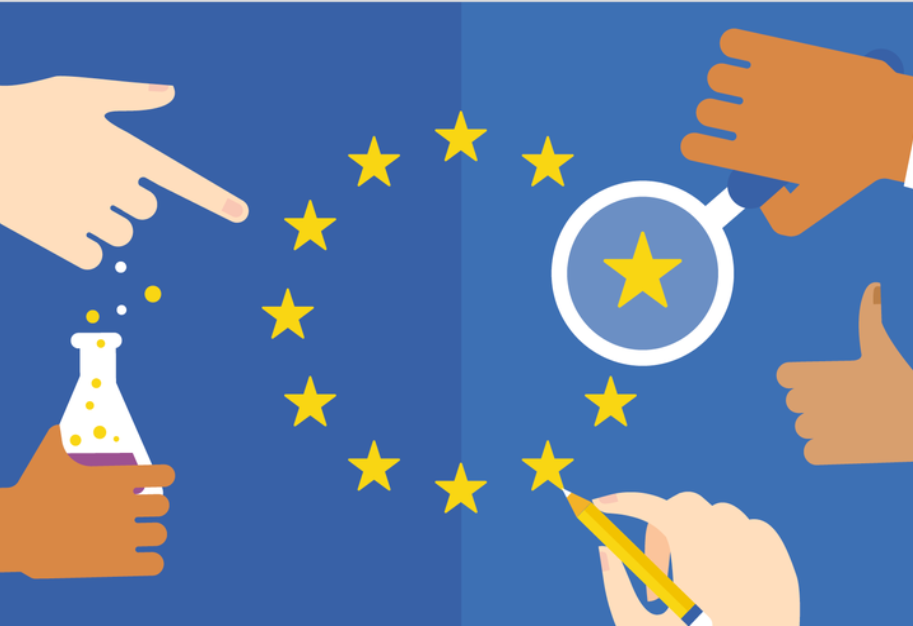The Chemistry Behind Soft Drinks: Why Phosphates Are Key
Ever wondered what gives your favorite fizzy drink its signature tang and long shelf life? Behind the bubbles lies a surprising scientific star: phosphates. These often-overlooked compounds play a crucial role in flavor, texture and freshness — making every sip a perfectly balanced experience.
What Are Phosphates, Really?
The Science of Phosphates
Phosphates are chemical compounds that are essentially salts or esters of phosphoric acid. In food and beverage applications, the most common types include orthophosphates and polyphosphates. Orthophosphates are simple compounds made of one phosphate unit, while polyphosphates are more complex, made of chains of phosphate units linked together. These compounds are highly valued in food science for their versatility - they help regulate acidity, retain moisture and stabilize emulsions, all of which are critical in processed foods and beverages.
Where You’ll Find Them
While phosphates occur naturally in many foods such as meats, dairy products, nuts and grains, they are also widely used as additives in the food industry. In soft drinks, they enhance flavor and balance acidity. In dairy and meat processing, phosphates help improve texture, increase shelf life and ensure product consistency. Their presence in a wide range of everyday items makes them one of the most essential, yet often overlooked, ingredients in modern food technology.
The Role of Phosphate in Soft Drink Formulations
Flavor Balancing and Acidity Control
One of the most recognizable uses of phosphates in soft drinks is in flavor balancing - especially in colas. Phosphoric acid, a phosphate derivative, is responsible for the signature tangy taste that sets colas apart from fruit-based sodas. It contributes a sharp, clean acidity that counters the intense sweetness of sugar or high-fructose corn syrup, creating a more refreshing and crave-worthy flavor profile. Beyond taste, phosphoric acid helps regulate the drink’s pH level, ensuring a consistent sourness that enhances the overall sensory experience.
Preservative Power
Phosphates also play a crucial role in keeping soft drinks safe and shelf-stable. Their ability to control acidity levels makes the environment less hospitable to microbial growth, extending the product's shelf life. By maintaining a stable pH, phosphates help preserve flavor, color and quality from the factory to your fridge. This preservative function is especially valuable in beverages stored for long periods or transported over long distances.
Enhancing Mouthfeel and Color
While phosphates are invisible to the eye and undetectable on the label to most consumers, they significantly influence the sensory experience of drinking a soda. They contribute to emulsification, helping to disperse flavor compounds and colorants throughout the liquid evenly. This ensures a uniform appearance and prevents ingredients from separating. Additionally, phosphates subtly impact how carbonation feels on the tongue, enhancing the crisp, fizzy sensation that makes soft drinks so satisfying.
In short, phosphates are not just functional - they're foundational to the soft drink experience.

The Chemistry Behind the Fizz: Phosphoric Acid in Action
How It Interacts With Carbon Dioxide
Phosphoric acid plays a subtle yet powerful role in enhancing the iconic "bite" of carbonated drinks. When carbon dioxide is dissolved in water, it forms carbonic acid, contributing to the drink’s sharpness. Phosphoric acid works in tandem with this process by maintaining an optimal acid-base equilibrium. This not only intensifies the fizzy sensation, but also balances out the sweetness of added sugars or artificial sweeteners. Additionally, phosphoric acid can influence how flavor molecules behave, interacting with them to create a more complex and layered taste profile.
Cola Chemistry Breakdown
While fruit-flavored sodas often use citric acid for a tart, citrusy zing, colas rely on phosphoric acid for a deeper, more robust flavor. Unlike the bright sharpness of citric acid, phosphoric acid adds a mellow tang with a slightly earthy undertone, which complements caramel coloring and spice notes typically found in cola recipes. This unique acidic base gives colas their signature taste - less fruity, more intense, unmistakably cola. Without phosphoric acid, the flavor balance and iconic profile of cola would simply fall flat.
Is It Safe? What Science Says About Phosphates in Beverages
Regulatory Limits and Approvals
Phosphates used in food and beverages are carefully regulated by major health authorities worldwide. The U.S. Food and Drug Administration (FDA), the European Food Safety Authority (EFSA), and the World Health Organization (WHO) all recognize food-grade phosphates as safe when consumed within established limits. These agencies have set acceptable daily intake (ADI) levels. For example, the EFSA recommends a combined daily phosphate intake of up to 40 mg per kilogram of body weight. Beverage formulations are designed to stay well within these limits, ensuring safety for the average consumer.
Health Concerns & Clarifications
Despite their widespread use, phosphates have occasionally raised health concerns, particularly regarding bone health and kidney function. Some early studies suggested that excessive phosphate intake might interfere with calcium absorption, potentially impacting bone density. However, current scientific consensus indicates that this effect is negligible for individuals with balanced diets and healthy kidney function. Concerns are more relevant for those with chronic kidney disease, as impaired kidneys struggle to regulate phosphate levels in the blood.
Still, the vast majority of studies conclude that moderate phosphate consumption from soft drinks poses no significant health risks for the general population. Ongoing research continues to refine our understanding, but for now, food-grade phosphates remain a safe and essential component of modern beverage formulations - approved by science and trusted by industry.
Industry Trends: Are Phosphates Being Replaced?
Rise of Natural Alternatives
As consumer demand grows for simpler, more natural ingredient lists, the beverage industry is responding with "clean-label" formulations. This movement has led some brands to experiment with phosphate-free soft drinks, turning to natural acidulants like citric acid (from citrus fruits), tartaric acid (from grapes) and malic acid (from apples). These alternatives align with the trend toward transparency and health-conscious choices, often marketed as more “natural” options.
Phosphate-Free Soft Drinks: Do They Taste the Same?
While natural acidulants can replicate some functions of phosphates, achieving the same flavor complexity and mouthfeel is challenging. Phosphoric acid gives cola beverages their deep, tangy bite that citric or malic acids often lack. As a result, phosphate-free colas may taste noticeably different - brighter and more citrusy, but less bold and balanced. Moreover, phosphates also contribute to texture and carbonation perception, which can be difficult to fully reproduce with alternatives.
Though innovation continues, for now, traditional phosphates remain unmatched in delivering the classic soft drink experience many consumers expect. The future may bring more refined natural solutions, but phosphates still hold a key role in the formulas of leading global brands.
FAQs About Phosphates in Soft Drinks
Why do only some soft drinks use phosphates?
Phosphates, especially phosphoric acid, are primarily used in cola-type beverages to create a distinct, bold flavor and balance sweetness with acidity. Fruit-flavored sodas typically use citric acid instead, which offers a brighter, tangier profile more suitable to those flavors.
What’s the difference between phosphoric acid and phosphates?
Phosphoric acid is a specific type of phosphate - a mineral acid derived from
phosphorus. In soft drinks, it acts as both an acidulant and a preservative. The term "phosphates" also includes salts and esters of phosphoric acid, which are used more broadly in food processing.
Are phosphates vegan?
Yes, most food-grade phosphates, including phosphoric acid, are synthetic or mineral-derived and considered vegan. They do not come from animal sources and are suitable for plant-based diets.
How much phosphate is in a regular can of cola?
A typical 12 oz (355 ml) can of cola contains about 30–50 mg of phosphoric acid, which is well within the safe daily intake range for most individuals.
Do phosphates affect sugar or caffeine levels?
No, phosphates do not alter the sugar or caffeine content in soft drinks. They work independently to influence taste, acidity and preservation - complementing, not interacting with, these other ingredients.
Conclusion – Small Molecules, Big Impact in Every Sip
Though often overlooked, phosphates are essential to the chemistry of soft drinks. From balancing acidity and enhancing flavor to preserving freshness and improving mouthfeel, these small molecules have a big impact on every sip. Whether it’s the crisp tang of a cola or the satisfying fizz that lingers, science - and phosphates - make it all possible. As the beverage industry evolves, one thing remains clear: behind every great soft drink is carefully crafted chemistry.
















